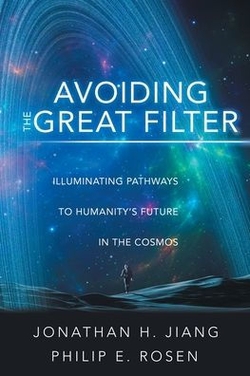Because its geology is so much like that of Mars, the Norwegian island of Svalbard is a useful site for creating strategies for future mission sampling and analysis. The Arctic Mars Analogue Svalbard Expedition (AMASE) has been using a suite of instruments to detect bacterial populations including spectroscopic equipment and a device that can detect cell wall components. The most interesting of the team's methods may be protein microarrays, which can test for thousands of different molecules simultaneously. "We've passed a major milestone," said Dr. Andrew Steele of the Carnegie Institution's Geophysical Laboratory, and a member of the AMASE team. "We successfully tested an integrated Mars life-detection strategy for the first time and showed that if life on Mars resembles life on Earth at all, we'll be able to find even a single-cell." Source: Press release "Major milestone for detecting life on Mars" via EurekAlert. An image of Dr. Steele on Svalbard (with spectacular scenery in...
A Martian Baltic Sea
A University of Colorado study, using data from the Mars Global Surveyor and Mars Odyssey orbiters, has concluded that the area surrounding the rover Opportunity's landing site once contained a huge body of water -- up to 330,000 square kilometers. That makes this Martian sea comparable to the Baltic or, as investigator Brian Hynek of the Laboratory for Atmospheric and Space Physics puts it, 'all of the Great Lakes combined.' Hynek's paper on the Martian sea ("Implications for hydrologic processes on Mars from extensive bedrock outcrops throughout Terra Meridiani") appears in the September 9 issue of Nature, and you can find CU's press release on his work here. The physicist used the thermal emission imaging system on-board Mars Odyssey to infer the size of rocks, studying how larger and smaller particles change temperature at different rates in daylight and at night. His thermal maps show wide areas of bedrock, and tell him that water once extended far beyond the landing area. To...
Slow Boat to Centauri?
Sending a golden disc filled with the sights and sounds of Earth, as we did with the Voyager spacecraft, may have been a pretty efficient way to communicate with extraterrestrial civilizations. That's the view of Christopher Rose, a professor of electrical and computer engineering at Rutgers, the State University of New Jersey. Rose and physicist Gregory Wright have the cover of the September 2 issue of Nature with a paper called ""Inscribed matter as an energy-efficient means of communication with an extraterrestrial civilization." Their thesis grew out of Rose's studies of wireless commnications and what he calls the 'energy budget' of sending a signal. Would ET really use radio, or would an advanced civilization scatter artifacts in more physical form? You can read the Rutgers press release about Rose and Wright's work here. And here is a quote: Rose is in favor of listening for that close encounter, but he thinks researchers should have their eyes open, too. Rose speculates that...
More on SETI@Home Signal
The BBC talked to SETI@Home researchers and others this morning re the possible SETI reception discussed below. The verdict: "It's all hype and noise," said its chief scientist, Dr Dan Wertheimer. "We have nothing that is unusual. It's all out of proportion." And Dr Paul Horowitz, of Harvard University, who specialises in hunting for possible alien contacts added: "It's not much of anything at all. We're not investigating it further." What will bear investigating is what caused what seems to have been a spurious signal. Should be a good chance to sort out a possible bug in the Arecibo receiving equipment. Check here for more.
SETI@Home’s Odd Catch
New Scientist is carrying the news of a singular find by SETI@Home, the distributed computing project that uses data from the Arecibo radio telescope to look for extraterrestrial radio signals. What is being described as 'the best candidate yet for a contact by intelligent aliens in the nearly six-year history of the SETI@home project' has been detected, emmanating from a source that may or may not be located somewhere between the constellations Pisces and Aries. Dubbed SHGb02+14a, the signal is weak and may in fact be the result of either an unknown natural phenomenon or an artifact in or near the Arecibo dish itself. Centauri Dreams' take: the odd drift in the 1420 MHz signal argues for a local anomaly at Arecibo. Yes, it could be a transmitter on a rapidly spinning planet, but what confounds researchers is that each observation starts at exactly 1420 MHz and then sees the signal begin to drift. What we need are independent observations from other dishes to confirm whether...

